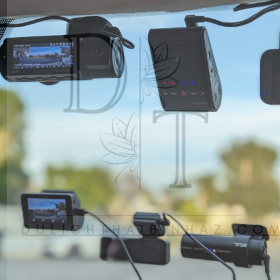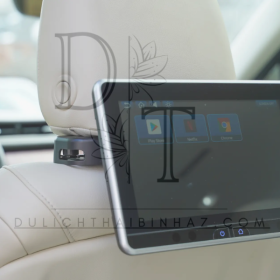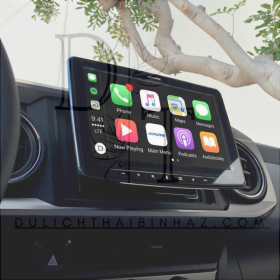Keeping your bike tires at the right pressure is essential for a safe, smooth ride, and having a portable bike pump on hand ensures you’re never left stranded with a flat tire. Whether you’re a casual rider, commuter, or serious cyclist, the right portable bike pump allows you to maintain tire pressure anywhere, enhancing your biking experience and prolonging the life of your tires. Here’s a guide to choosing the best portable bike pump for your needs, from top options to essential features and tips for use.
Key Highlights
- Why a Portable Bike Pump is Essential: Benefits of carrying a compact pump on rides.
- Top Portable Bike Pumps: A look at the best options for various cycling needs.
- Features to Consider in a Portable Bike Pump: Important factors like size, PSI, and compatibility.
- Tips for Using Your Portable Bike Pump: How to maximize efficiency and ease of use.
- FAQs: Common questions about portable bike pumps.
1. Why a Portable Bike Pump is Essential
A portable bike pump is a must-have for cyclists, providing convenience, safety, and peace of mind. Here are the key benefits of keeping one with you:
- Immediate Tire Inflation: Avoid delays and fix a flat on the go, ensuring you can continue your ride without interruption.
- Improved Performance: Properly inflated tires ensure smoother rides, better handling, and increased efficiency.
- Tire Longevity: Regular inflation prevents over- or under-inflation, which can lead to premature tire wear.
- Versatility: Many portable bike pumps are compatible with multiple valve types and can be used for various types of bikes, including road, mountain, and commuter bikes.
2. Top Portable Bike Pumps for Every Cyclist
Below are some of the best portable bike pumps on the market, each with features tailored to specific riding styles and needs.
1. Vibrelli Mini Bike Pump
- Overview: This compact, lightweight pump comes with a frame mount kit, making it easy to attach to your bike.
- Key Features: Compatible with Presta and Schrader valves, up to 120 PSI, includes a glueless puncture repair kit.
- Best For: Road cyclists and commuters.
- Pros: Lightweight, durable aluminum construction, and versatile valve compatibility.
- Cons: Limited efficiency for larger-volume tires like mountain bikes.
2. Pro Bike Tool Mini Bike Pump
- Overview: Known for its durability and compact size, the Pro Bike Tool Mini is a high-quality pump designed for efficiency.
- Key Features: Presta and Schrader valve compatibility, 100 PSI max, and ergonomic handle for better grip.
- Best For: Road cyclists and those looking for a reliable pump that’s easy to carry.
- Pros: Durable construction, easy-to-use valve system, and high pressure.
- Cons: May require more strokes for full inflation on large tires.
3. Topeak Road Morph G Mini Pump
- Overview: The Topeak Road Morph G combines portability with the functionality of a floor pump, featuring a fold-out foot pad and a flexible hose.
- Key Features: Pressure gauge, Presta and Schrader compatibility, up to 160 PSI.
- Best For: Long-distance riders and touring cyclists.
- Pros: High PSI, fold-out foot pad for stability, and easy-to-read gauge.
- Cons: Bulkier than other portable options, but worth it for the added stability and gauge.
4. Lezyne Micro Floor Drive HP
- Overview: A mini floor pump design, the Lezyne Micro Floor Drive offers high pressure and easy use with an integrated foot peg.
- Key Features: High-pressure capability up to 160 PSI, Presta and Schrader compatible, stainless steel foot peg.
- Best For: Riders seeking a balance between portability and ease of use.
- Pros: High-pressure output, durable construction, and easy inflation.
- Cons: Slightly heavier and larger than traditional mini pumps.
5. Crankbrothers Gem Hand Pump
- Overview: This dual-action pump allows you to switch between high volume and high pressure, making it versatile for various bikes.
- Key Features: High-volume and high-pressure modes, Presta and Schrader compatible, and compact design.
- Best For: Mountain bikers and those needing flexibility for different tire types.
- Pros: Dual-function mode, compact, and versatile.
- Cons: High PSI can be challenging to achieve compared to floor pumps.
3. Features to Consider in a Portable Bike Pump
When selecting the best portable bike pump for your needs, consider these essential features to ensure it’s a perfect fit for your cycling style:
Valve Compatibility
Make sure your pump is compatible with the valves on your bike tires. Most bikes have either Presta or Schrader valves, so it’s important to choose a pump that supports both or matches your specific valve type.
Pressure Capacity (PSI)
If you’re a road cyclist, you’ll need a pump capable of reaching high PSI (usually around 80-120 PSI). Mountain bikers, on the other hand, typically need lower PSI but higher volume, so look for pumps that offer flexibility or dual modes.
Size and Weight
Portability is key, especially if you’re carrying the pump on your bike or in a backpack. Compact, lightweight pumps are ideal for convenience, but make sure they still offer sufficient power for your needs.
Construction Quality
Choose a pump made from durable materials like aluminum or stainless steel. High-quality construction not only ensures long-lasting use but also keeps the pump functioning effectively under various conditions.
Additional Features
Consider pumps with extras like a built-in pressure gauge, which helps you monitor tire pressure accurately, or a fold-out foot pad for stability. These features may add bulk but provide added convenience and ease of use.
4. Tips for Using Your Portable Bike Pump
To get the best results from your portable bike pump, follow these tips:
1. Ensure a Proper Seal
When attaching the pump to your valve, make sure you have a secure seal to avoid air leaks. If your pump has a flexible hose, use it to help position the pump without bending the valve.
2. Pump Consistently
Use smooth, consistent strokes to build pressure gradually. Rushing may lead to inefficiency and require more strokes to reach the desired PSI.
3. Check Pressure Regularly
If your pump doesn’t have a gauge, try to carry a separate pressure gauge or check the pressure by feel. Properly inflated tires ensure optimal performance and minimize the risk of flats.
4. Practice Using Your Pump Before Rides
Practice makes perfect, especially with pumps that require specific attachment techniques. Get comfortable with your pump’s operation at home before you need it during a ride.
Conclusion
A reliable, portable bike pump is an invaluable tool for any cyclist, offering peace of mind and practicality on every ride. With so many options on the market, from compact designs to mini floor pumps, there’s a best portable bike pump for every type of cyclist. By choosing the right features, you’ll be prepared to maintain tire pressure anywhere, ensuring a safe, enjoyable biking experience.
FAQ
1. How often should I check my bike tire pressure?
For regular riders, it’s ideal to check tire pressure before each ride. Properly inflated tires improve performance and help prevent flats.
2. What’s the difference between Presta and Schrader valves?
Presta valves are slimmer and often found on road bikes, while Schrader valves are wider and commonly used on mountain and hybrid bikes. Make sure your pump is compatible with your valve type.
3. Can a portable bike pump inflate car tires?
Most portable bike pumps aren’t designed for car tires due to their lower PSI capabilities. However, some higher-pressure pumps with Schrader compatibility may inflate small tires in emergencies.
4. What’s the recommended PSI for bike tires?
Road bike tires generally require 80-130 PSI, while mountain bike tires usually range from 30-50 PSI. Check your bike’s specific PSI recommendation for best results.
5. How long does it take to fully inflate a bike tire with a portable pump?
It depends on the pump’s capacity and your tire type. Typically, it takes a few minutes for a road bike tire and a bit longer for larger, high-volume mountain bike tires.












